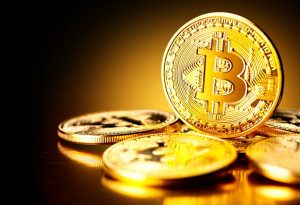 Bitcoin (as conceived by the vaguely Galt-like figure of Satoshi Nakimoto) was supposed to be the next evolution of money. What were the earlier evolutions?
Bitcoin (as conceived by the vaguely Galt-like figure of Satoshi Nakimoto) was supposed to be the next evolution of money. What were the earlier evolutions?
Once, money didn’t exist, and nobody needed to it exist. Early man was apparently a fission-fusion society, with all of its members able to provide the means of their own survival.
Then our brains grew bigger, our toolmaking more sophisticated, and a problem emerged: some new skills took a long time to learn. It was no longer possible for one person to be good at everything. We began to specialise – some dug storage pits, some wove nets, some fashioned spears. Humanity went from being freestanding pylons to a truss-frame bridge, each member relying on the other members to not fall down.
We began to trade our skills, establishing the first economy. Contrary to common belief, there isn’t much reason to think early man made use of a “barter” economy, with goods traded directly for other goods. The more common scenario was likely a economies based on gift-giving (as is seen in hunter gatherers today). Either way, with lots of gifts, and lots of giving, everyone received what they need.
But barter and gift based economies have a weakness: some things can’t be easily swapped or traded. If I make hats and you make houses, how are we supposed to transact? Do I get a house and you get a hundred hats? Do you get a hat and I get a half a retaining wall? Suppose you can’t begin building my house for six weeks, when the weather improves, but you want your hat right now? Is there any way we can conduct business?
Yes, but first we need a way of storing value. Suppose we take all the pebbles from a beach, and distribute them evenly among the tribe. If I make you a hat, you give me a pebble. If you build me a house, I give you a hundred pebbles. If you can’t build my house for six weeks, then I have assumed risk (you might not build the house), so maybe you’ll agree to only take eighty pebbles as payment for your work. Skilled and valuable people will be rewarded with lots of pebbles (proxies for hats, and houses, and fish). If your supply runs low, then perhaps it’s a sign that you’re taking more from the tribe than you are giving.
The system works so long as there are a fixed number of pebbles in circulation. It breaks down instantly if I walk further down the coast, discover a new beach nobody knows about, and put hundreds of pebbles in a wheelbarrow. Now my store of pebbles no longer matches my input of labor to the tribe. The market is distorted, people will lose faith in it, and the stability goes away. Maybe a fish is worth one pebble, maybe a thousand.
The requirements of money are manifest: it must be rare, hard to fake, and testable. In other words, you have to be able to trust it.
Money in the United States is issued by the Federal Treasury, and has sophisticated anti-counterfeiting measures, including a 3D security ribbon, a pair of matching serial numbers, and a watermark visible under UV light. It is hard to copy. I’m reminded of how Egyptian pharoahs would engrave their accomplishments on limestone, and sometimes they’d chisel out the names of the old pharoahs and replace them with their own. The Ramisside Dynasty ensured against this by carving their achievements in five inches deep into the stone. Trust is the heart of everything.
For centuries, most of the world used precious metals and stones. In other parts of the world, work-based currency was used: Oliva carneola snail shells painstakingly ground down to size, and threaded through with beads. They were labour intensive to make that nobody could crash the market with sudden injections of volume.
But using physical items as money has its own problem, and it’s a sneaky one that doesn’t seem obvious at first: deflation.
Economies usually grow. This is a very predictable fact about them. Populations increase (adding extra labour input), technology improves (adding a labour multiplier) and infrastructure improves (facilitating trade). And if there’s a fixed number of snail shells in circulation, each of them becomes capable of buying more and more product.
The result? People start hoarding snail shells, because if they spend them, they’ve traded an increasingly valuable item for a flat line. The economy slows down, because not enough people are actually using the currency.
In recent centuries, most countries have passed from a metallist system (where money is backed by precious metals) to a fiat system, where pieces of paper are valuable essentially because the government has decided that they are. This allows fine-tuning, and intricate control. If the economy is deflating, the government can introduce more money.
The only issue, again, is trust. How much do you trust your government? Do you think they’ll look out for your best interests? And even if they do, how much longer do you think your government will continue to exist for?
The fiat system seems to work. The grass grows and the trains arrive on time. But it’s hard not to feel like Wile E Coyote running off a cliff into empty air.
Bitcoin was supposed to be the next evolution of money. Unfortunately, at some point this new transitional form ended up at the bottom of a tar pit. More later.
No Comments »
Comments are moderated and may take up to 24 hours to appear.
No comments yet.
